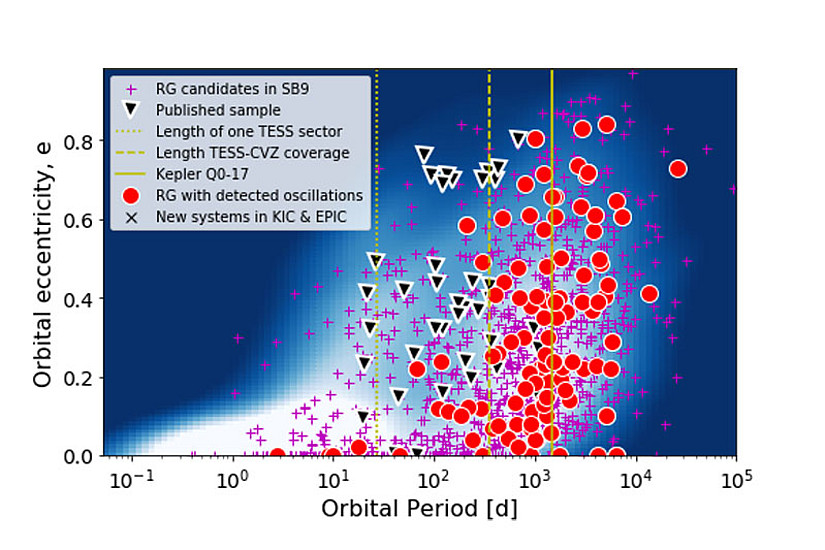Stars are extreme laboratories of physics. No terrestrial laboratory can produce such high energies, temperatures, pressures, or masses in experiments as they prevail in the interior of stars. However, the bright atmosphere prevents a view into the layers below so that astrophysicists can only indirectly deduce the conditions inside the star.
Like reconstructing our planet's structure using measured seismic vibrations, astrophysicists can infer the internal structure of stars using periodic variations in brightness. Oscillations in the star itself cause these fluctuations. The concept is best explained by tapping on a wine barrel. A high-pitched tone indicates a full (high-density) barrel, while a low-pitched tone indicates an empty barrel. Now you cannot tap on a star to make it vibrate. The star does this all by itself: In the Sun, for example, these oscillations are stimulated by turbulence near the star's surface, which spreads deep into the star. Our central star is constantly traversed by millions of oscillation modes so that its brightness varies minimally, typically on a time scale of around five minutes. This research is called asteroseismology and is the focus of Paul Beck's Junior Research Group at the Institute of Physics at the University of Graz. To be able to examine the oscillations, the researchers use measurements of the stellar brightness from the NASA space telescopes Kepler and Tess, as well as from the Austrian BRITE satellites.
Of particular interest to the research group are oscillating stars found in binary star systems. Binary stars are two stars born together from a cloud of interstellar dust and orbit around a common center of mass like in a planetary system. Since these stellar twins have many other similarities in addition to the same stellar age, the differences in the common stellar evolution can also be better understood. The researchers are particularly fond of red giant stars. These stars resemble the stage of development that our sun will reach in about 5 billion years after it has used up its hydrogen supply in the core and fused it into helium. However, very few red giants are known to exist in binary star systems. While these space telescopes have unearthed hundreds of thousands of oscillating red giants, only 40 oscillating giants have been found in binary systems.
The international team led by Paul Beck and with the participation of graduate student Lukas Steinwender has managed to find and measure 99 previously unknown oscillating red giants in binary star systems using a new search strategy. The researchers were thus able to triple the number of known and measured giant binary star systems in one fell swoop. This increase is significant because the previous sample has poorly covered a specific parameter space of stellar evolution. The evolution and interaction of stars in binary systems can now be studied in a broader framework using asteroseismology with the extended and more complete sample of systems. In addition to a structural analysis of the individual stars, further research focuses on the tidal forces between the two stars.
The study was recently accepted for publication in the renowned journal Astronomy & Astrophysics.
Image: Beck et al. (2022, A&A accepted)
The figure shows the periods and the eccentricity of the orbits of the already known (black triangles) and the 99 newly found binary star systems (red circles). It is shown very nicely that the newly found systems have significantly longer orbital periods than the previously known ones. With the expansion of the group of known red giant binaries, more detailed studies of evolution as well as tidal forces can now be conducted.




